by #Comcom
Indonesia is the largest archipelagic state in the world lying between two Oceans (Pacific and Indian) and two Continents (Asia and Australia) it comprised of a total of 8,063,601 km2 of territory of which 76.38% are bodies of water. With a Coastline of 54,720 km (34,000 mi) in length, it's the 2nd longest in the World with only Canada a top of it.
The 5 most important Island in which Java, Sumatra, Kalimantan, Sulawesi, Papua are all separated by a huge body of water, this doesn't yet get into account the approximately 18,307 islands islands scattered all along the archipelago, some which have a significant population ( 922 of those are permanently inhabited ) living on it.
With a population of over 141 million, Java constitutes the lion shares of Indonesian population (about 56.7 percent of the Indonesian population) and is the world's most populous island. with Megacities like Jakarta, Surabaya, Bandung, Semarang etc becoming the main Economic contributor for a huge percentage of Indonesian GDP.
Being archipelagic means the central government (in Java) must maintain unity and integrity of the country, and in doing so the Indonesian Army are uniquely deployed based on the German system of Wehrkreise, or Military District, in which the Indonesian National Army (TNI-AD) uses military districts, known as Komando Daerah Militer (Military Region command) or KODAM , there are 15 of them ,each which is headed by a Major General, each Kodam usually has its own artillery, cavalry and air defence battalion as well as some Raider battalions. Rotations among units are common
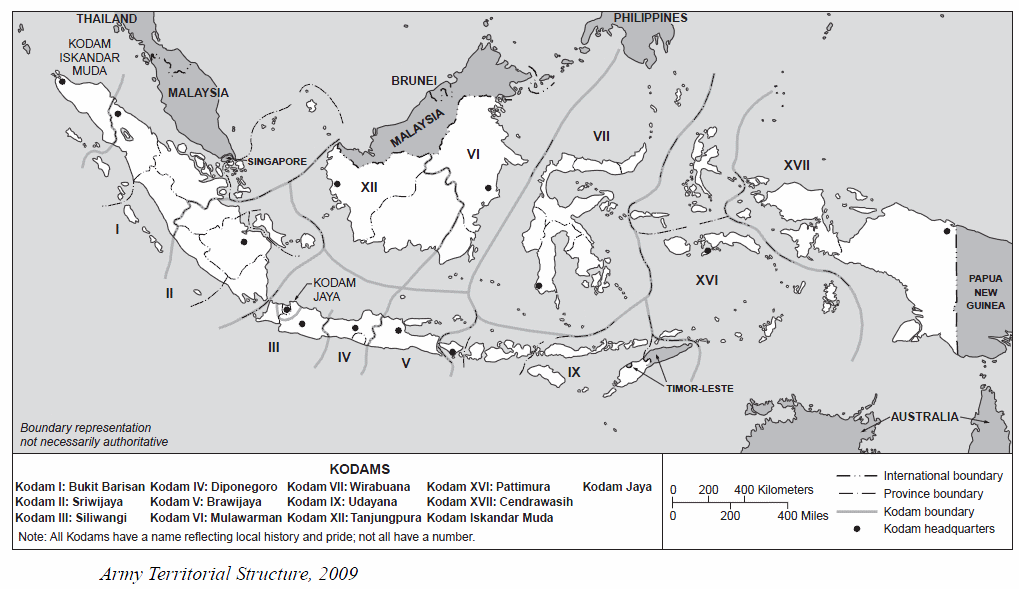
Being an Army oriented, archipelagic state, means that Indonesia have a severe disadvantage in maneuver warfare involving huge Army groups, in contrast to continental warfare in Europe where armies are reduced to pockets after being attacked and encircled, the Indonesian Army are already reduced to pockets since day 1 when the war starts, with armies in Java, Kalimantan, Sumatra, Sulawesi and Papua all separated by huge bodies of waters.
With many of the Army best equipment and KOSTRAD (Army strategic reserves) are based in Java, it's critical for the Indonesian Army to move at speed and in numbers to help their other men in arms potentially under threat from a hostile invasion on the other islands. To do this the Indonesian Navy and Army have developed one of the largest amphibious fleet in Asia.
1.The Navy
The Indonesian Navy, tonnage and personnel wise is the largest in Southeast Asia, with approximately 74,000 active duty personnel and 81 ships. The Navy is divided into 3 Armada (Fleet).

with each 3 are equipped with it's own Military Sealift Command or Komando Lintas Laut Militer (KOLINLAMIL) with the largest are based in the first fleet port of Tanjung Priok, Jakarta.
Indonesian Navy sealift are equipped with a plethora of ships mainly from LPD,LST,LCU and some militarized ferry ships.
Landing Platform Docks
To this date, The TNI-AL operate 5 Landing Platform Docks divided into 3 sub-classes, all are based on design by Daewoo shipyard.

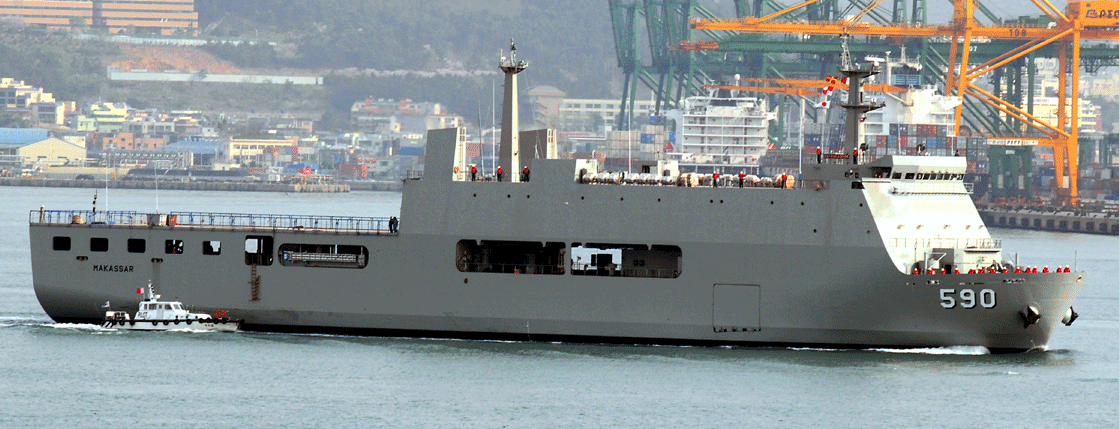


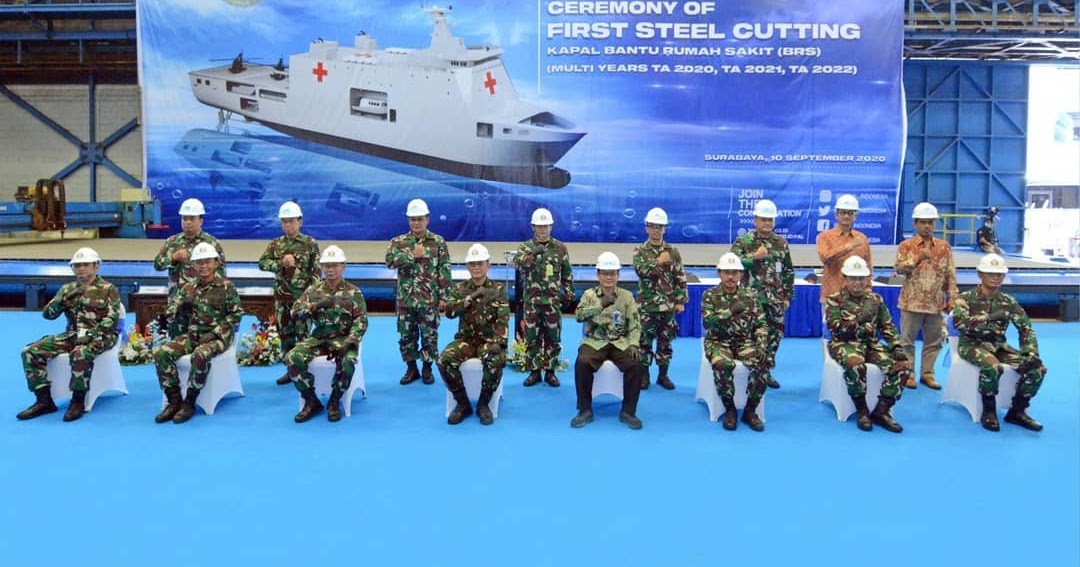
Landing ship tanks or LST, make up the bulk of Indonesian Navy amphibious fleet, and it have a long history in supporting Indonesian Navy operations since it's early days till now. Indonesia operate 5 Class of LST imported and built domestically

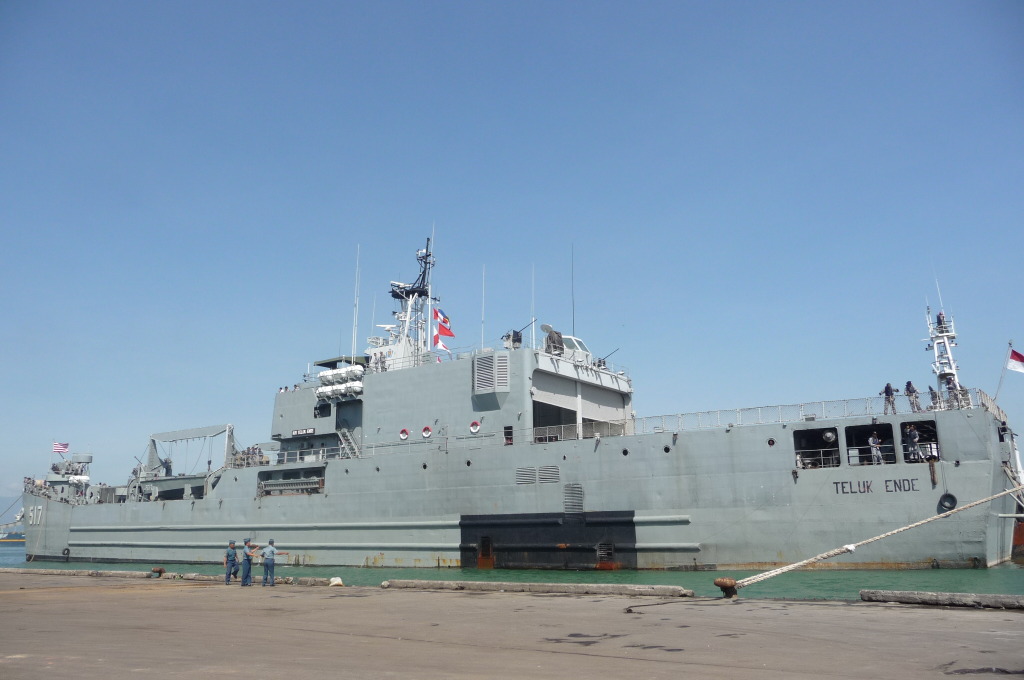




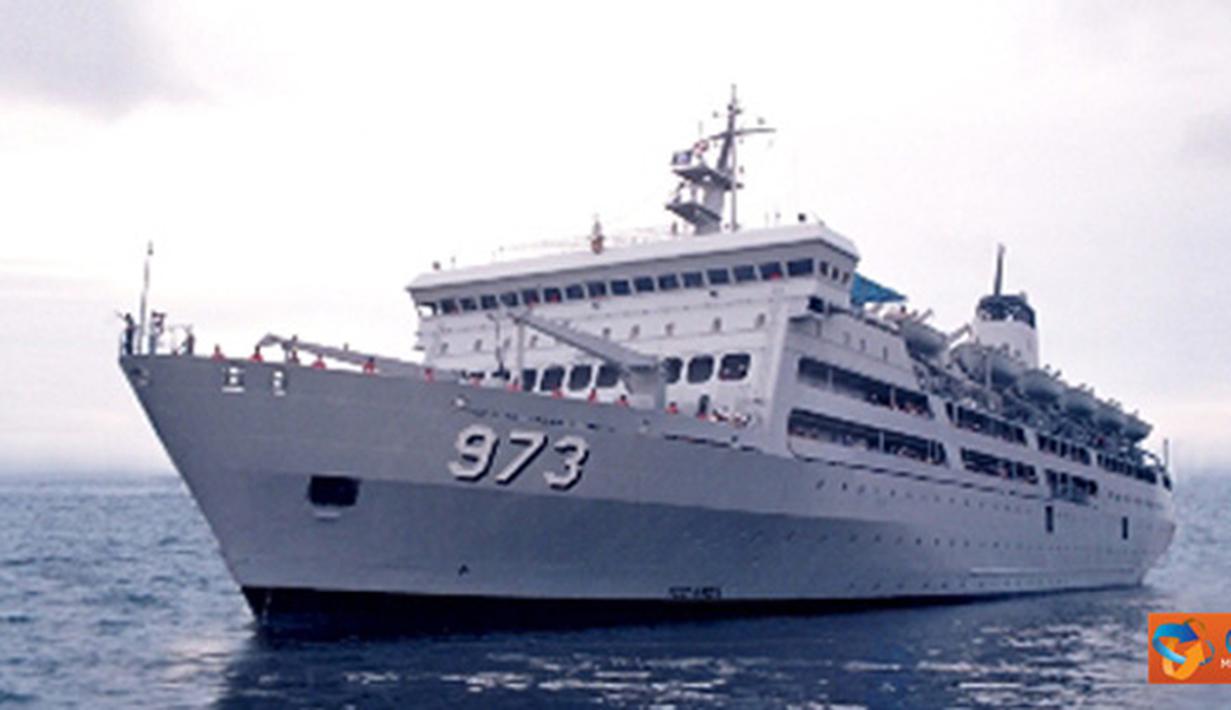
2. The Army
The Indonesian Army also operate transport ships in the form of Dry Cargo ship,LCU and LST, army operated transport ships could be identified by their hull name ADRI-(Roman Numerals).
All of army ships are operated by the Batalyon Perbekalan Angkutan 4/Air or (Yon Bekang 4/Air) or Transportation Supply Battalion 4/water, based in Tanjung Priok in North Jakarta.
Ships tonnage used by the army ranged from 150DWT up to 1200DWT, although in the past ships up to 10.000DWT
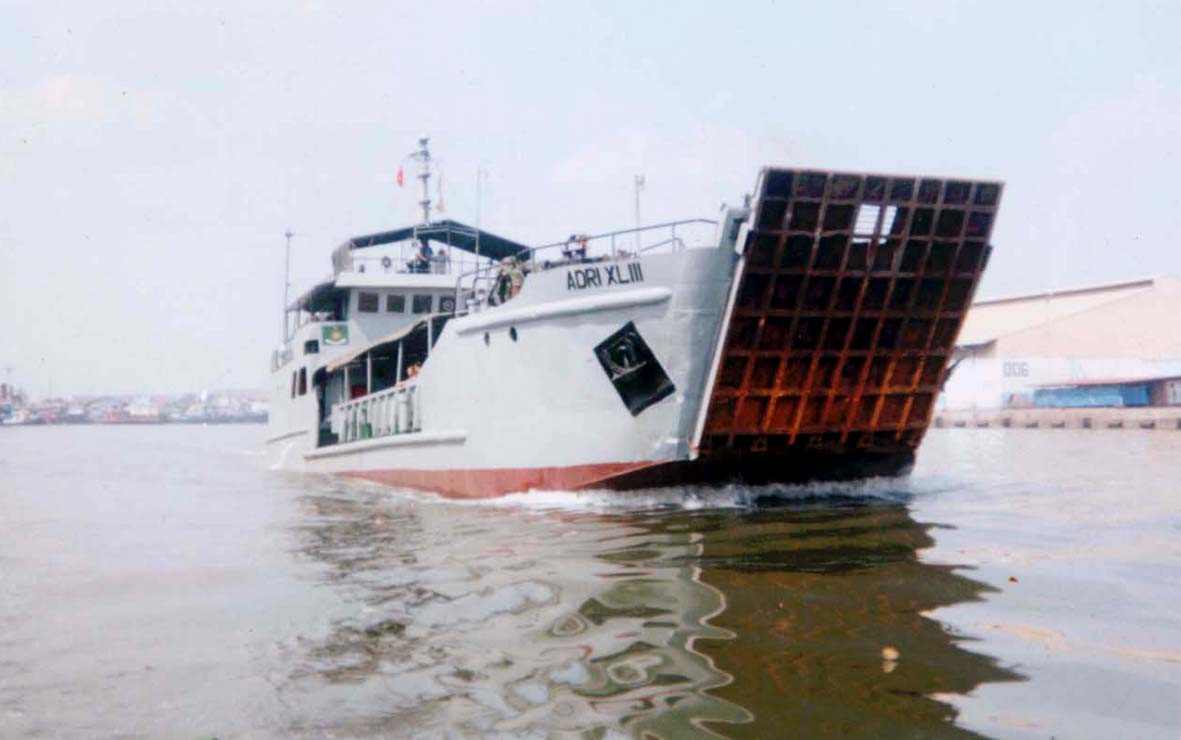
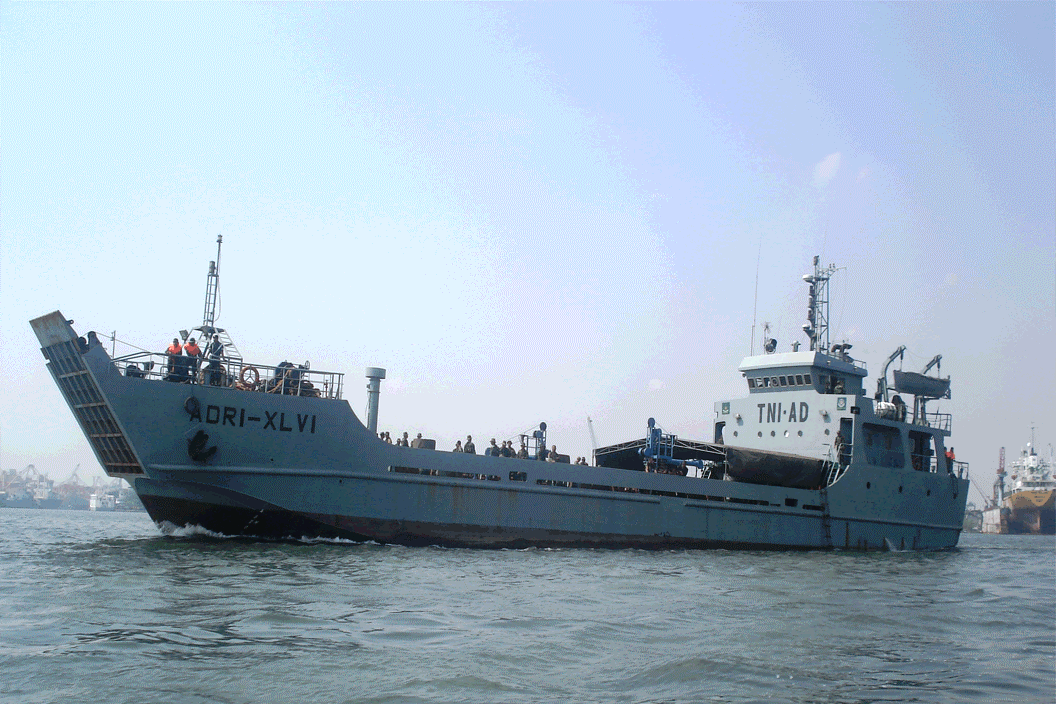

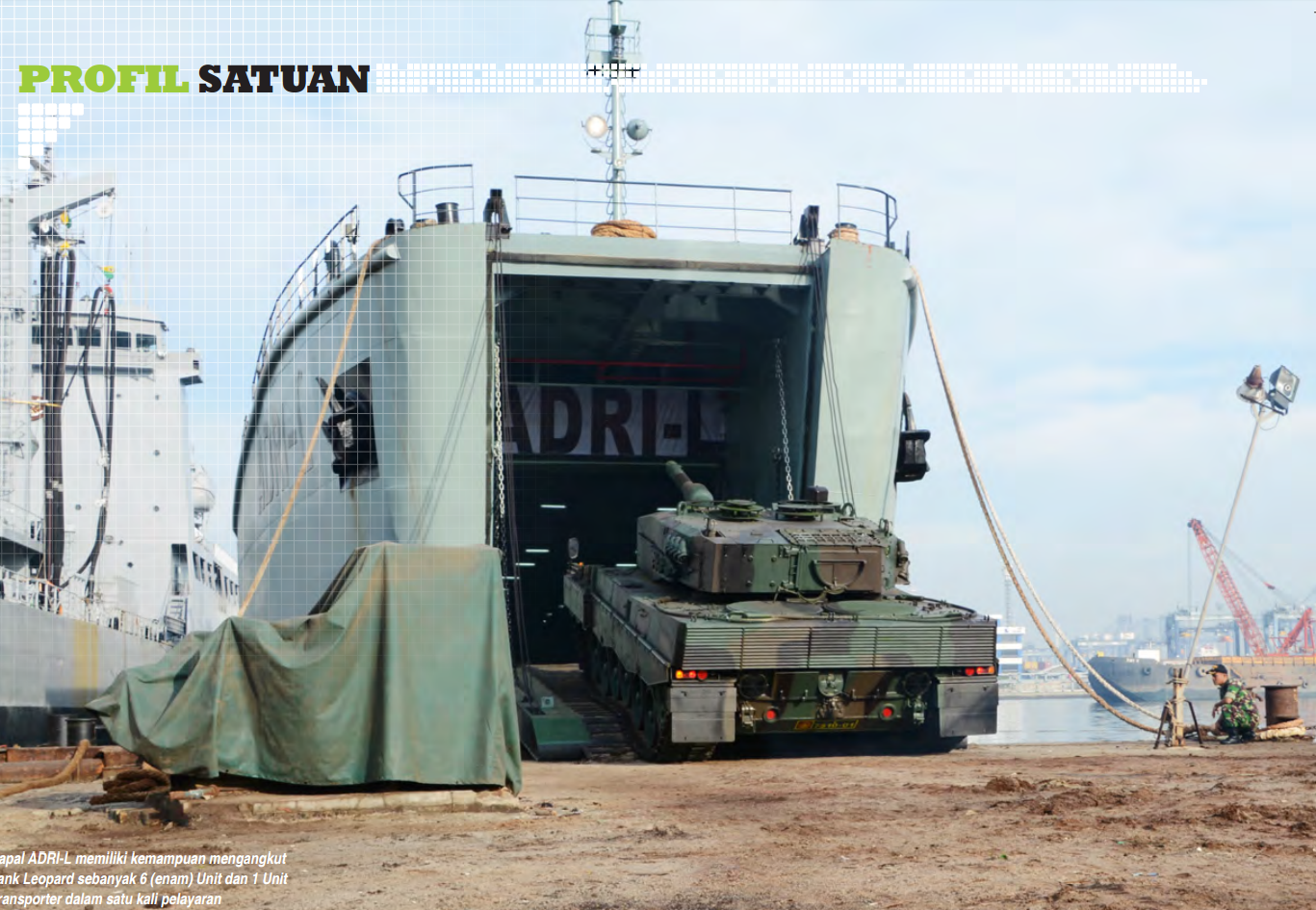
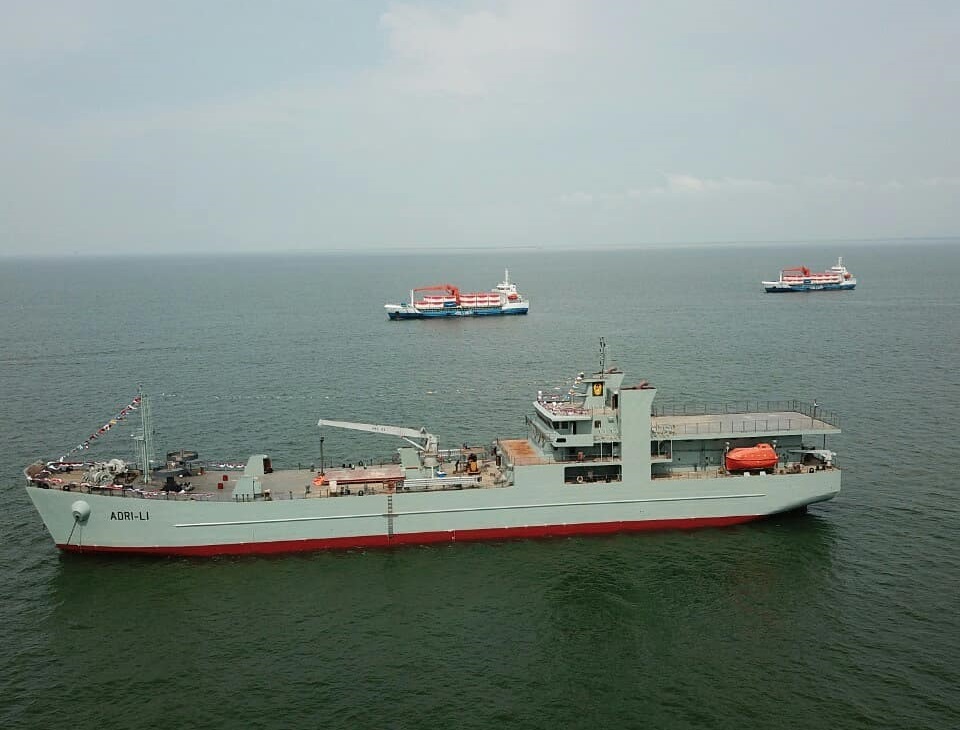
With the Army sealift capabilities alone are larger than some ASEAN country's Navy transports, it's not hard to understand why as an archipelagic nation, the availability and and capability of a huge sealift fleet are central in support of the Indonesian Army operations and deployments all across the huge country's swaths, from supply of material to remote outpost, logistics, troop rotations, HADR and transport in war, the Navy and Army sealift is indeed essential in the success of the TNI reaching it's intended objective
@ANMDT @Nilgiri @T-123456 @Azull @Madokafc @Chestnut @Gautam @Joe Shearer @Cabatli_53 @Kartal1 @Nein2.0
Indonesia is the largest archipelagic state in the world lying between two Oceans (Pacific and Indian) and two Continents (Asia and Australia) it comprised of a total of 8,063,601 km2 of territory of which 76.38% are bodies of water. With a Coastline of 54,720 km (34,000 mi) in length, it's the 2nd longest in the World with only Canada a top of it.
The 5 most important Island in which Java, Sumatra, Kalimantan, Sulawesi, Papua are all separated by a huge body of water, this doesn't yet get into account the approximately 18,307 islands islands scattered all along the archipelago, some which have a significant population ( 922 of those are permanently inhabited ) living on it.
With a population of over 141 million, Java constitutes the lion shares of Indonesian population (about 56.7 percent of the Indonesian population) and is the world's most populous island. with Megacities like Jakarta, Surabaya, Bandung, Semarang etc becoming the main Economic contributor for a huge percentage of Indonesian GDP.
Being archipelagic means the central government (in Java) must maintain unity and integrity of the country, and in doing so the Indonesian Army are uniquely deployed based on the German system of Wehrkreise, or Military District, in which the Indonesian National Army (TNI-AD) uses military districts, known as Komando Daerah Militer (Military Region command) or KODAM , there are 15 of them ,each which is headed by a Major General, each Kodam usually has its own artillery, cavalry and air defence battalion as well as some Raider battalions. Rotations among units are common

Being an Army oriented, archipelagic state, means that Indonesia have a severe disadvantage in maneuver warfare involving huge Army groups, in contrast to continental warfare in Europe where armies are reduced to pockets after being attacked and encircled, the Indonesian Army are already reduced to pockets since day 1 when the war starts, with armies in Java, Kalimantan, Sumatra, Sulawesi and Papua all separated by huge bodies of waters.
With many of the Army best equipment and KOSTRAD (Army strategic reserves) are based in Java, it's critical for the Indonesian Army to move at speed and in numbers to help their other men in arms potentially under threat from a hostile invasion on the other islands. To do this the Indonesian Navy and Army have developed one of the largest amphibious fleet in Asia.
1.The Navy
The Indonesian Navy, tonnage and personnel wise is the largest in Southeast Asia, with approximately 74,000 active duty personnel and 81 ships. The Navy is divided into 3 Armada (Fleet).

- the 1st fleet based in Tanjung Priok, Jakarta (yellow)
- the 2nd based in Surabaya (green)
- and the newly formed 3rd Naval fleet based in Sorong, Papua (blue)
with each 3 are equipped with it's own Military Sealift Command or Komando Lintas Laut Militer (KOLINLAMIL) with the largest are based in the first fleet port of Tanjung Priok, Jakarta.
Indonesian Navy sealift are equipped with a plethora of ships mainly from LPD,LST,LCU and some militarized ferry ships.
Landing Platform Docks
To this date, The TNI-AL operate 5 Landing Platform Docks divided into 3 sub-classes, all are based on design by Daewoo shipyard.
A. Tanjung Dalpele (now KRI. Dr.Soeharso ) class

The Tanjung Dalpele class consisted of a single ship, KRI Tanjung Dalpele, built in South Korea in 2003 by the Daewoo Shipyard The vessel had a standard displacement of 7,400 tonnes (7,300 long tons) and 11,600 t (11,400 long tons) at full load , The ship measures 122 metres (400 ft 3 in) long overall with a beam of 22 metres (72 ft 2 in) and a draught of 4.9 metres (16 ft 1 in). She was soon renamed KRI Dr.Soeharso and converted intoa hospital ship. although since she's also frequently spotted used as military transports as she was first conceived.
Powered by a combined diesel and diesel (CODAD) system comprising two Burmeister & Wain (B&W) 8L28/32A diesel engines turning two shafts creating 3,910 kilowatts (5,250 hp). The ship is good for maximum speed of 15 knots (28 km/h; 17 mph) and a range of 8,600 nautical miles (15,900 km; 9,900 mi) at 12 knots (22 km/h; 14 mph).
The vessel is equipped with a well deck and is capable of accommodating two LCU-23M landing craft and two landing craft for vehicles and personnel (LCVPs). As an LPD, Tanjung Dalpele had a lift capacity of 13 tanks and 507 troops.[1] The vessel is equipped with hospital facilities (five operating rooms and six polyclinics) and is utilised as a hospital ship by the Indonesian Navy. As a hospital ship the vessel is capable of accepting up to 2,000 patients and has a crew of 126 with 51 medical specialists.
B. Makassar Class
Based on the early success (and probably satisfaction of the Navy) of the Tanjung Dalpele Ship, the Navy embarked on a similar ships and similar specifications,
A contract of 4 ships are signed between the Indonesian Navy and Daewoo Shipbuilding on December 2004 totaling US$150 million , the first two which is built by South Korea are named KRI Makassar (590) and KRI Surabaya (591), with a standart displacement of 7,300 tons and 11,394 tons full displacement, measuring 125M in length, 22M beam and draught of 4.9M both are completed in 2006
Both Ships are able to carry 2xLVCP and around 40 armored vehicles in decks below in addition to 354 troops with accommodation for 507 persons in addition to it's 126 crew. it's aviation facilities include hangar for a light utility Helicopter (usually from Bell-412 or Nbo-105's) and 2 landing pads.
C. Banjarmasin Class

Based upon a modification of the Makassar class, On 19 October 2006, the first of the two Indonesian-built units, was laid down in a ceremony by Admiral Slamet Soebijanto, Chief of Staff, Indonesian Navy. the Indonesian state owned PT.PAL took upon itself to include local design, such as the removal of the hangar section to increase the number of landing pads to 3 from the previous 2 , it also change the facia of the bridge, taking design cue from Dutch shipbuilder Damen Sigma class corvette which is already in service in the TNI-AL.
Just like the previous two both ships are named after Indonesian Cities, the KRI Banjarmasin (592) and the KRI Banda Aceh (593), many of the specs are very similar with the previous 3 with a standart displacement of 7,300 tons and 11,394 tons full displacement, measuring 125M in length, 22M beam and draught of 4.9M both are completed in 2006. Both Ships are able to carry 2xLVCP and around 40 armored vehicles in decks below in addition to 354 troops with accommodation for 507 persons in addition to it's 126 crew. it's aviation facilities include 3 landing pads.
D. Semarang-class

Looking to keep PT.PAL operations running, The Indonesian MoD signed a contract with PT.PAL in 2016 for a first of 3 new LPD based on export oriented Tarlac class design, which itself is the third iteration of the Tanjung Dalpele Class LPD.
The first of batch-3 LPD, the KRI Semarang (594) are launched in 2018, initially to be built as pure LPD , the 2018 Earthquake in Palu forced the Indonesian Navy to install additional medical and surgeon equipment on board . She would likely be used in this capacity until it's next sister ship is completed, which is now at 71% progress.
many of the specs are very similar with the previous 3 with a standart displacement of 7,300 tons and 11,394 tons full displacement, measuring 125M in length, 22M beam and draught of 4.9M both are completed in 2006. Both Ships are able to carry 2xLVCP and around 40 armored vehicles in decks below in addition to 354 troops with accommodation for 507 persons in addition to it's 126 crew. it has 2 landing pads for utility helicopters.
on the 10th of September 2020, coinciding with the 75th Anniversary of the Indonesian Navy, the first steel cutting for the third Semarang class LPD is done by representatives of the navy in PT.PAL, Surabaya

Landing Ship TankLanding ship tanks or LST, make up the bulk of Indonesian Navy amphibious fleet, and it have a long history in supporting Indonesian Navy operations since it's early days till now. Indonesia operate 5 Class of LST imported and built domestically
A. Frosch class

The Frosch class (also known as Teluk Gilimanuk class) came into Indonesian Navy service in the 90's, and are formerly operated by the German Democratic Republic Navy, the unification of East and West Germany and it's integration to a NATO standard service , prompted Indonesia to buy as much as 39 ex-Volksmarine assets, including 14 Frosch class LST. 2 have been involved in accidents, the latest is in July 2020, where the Teluk Jakarta capsized under heavy seas
The sale was mired by corruption and it's subsequently become synonymous with corruption linked to the then ruling Indonesian President, Soeharto
The ships are armed with :
- 1 × 37/63 mm gun
- 2 × twin-25 mm guns
it's carrying capacity is around 11-12 armored vehicle or 600 tons and a company of marines.
B. Teluk Semangka Class

Built by the South Korean Tacoma Marine Industries Ltd (KTMI) in the early 80's, the four Teluk Semangka class formed the backbone of Indonesian Navy amphibious assault ships in the 80-90s. it's dimension is 100 x 15,4 x 4,2 meter, with a displacement of 1.800 ton and full displacement of 3.770 ton
some minor difference exist between the first two and the last two, with the last two ships are equipped with Hangars but their 40mm rear bofors are removed. these are known as the "commando" variant.
Recently 3 ships are still active in Indonesian Navy service, while the lead ship, ex-Teluk Semangka were retired in 2012 and used as target ship.
it's carrying capacity is around 11 armored vehicle or 690 tons of loads. and a company of marines
C. Teluk Amboina Class

Could be the last of WW-2 Pattern LST in service anywhere in the world , the Teluk Amboina's is a class of 9 ships of LST-542 class, consisting of KRI Teluk Langsa 501, KRI Teluk Bayur 502, KRI Teluk Amboina 503 , KRI Teluk Kau 504, KRI Teluk Menado 505, KRI Teluk Tomini 508, KRI Teluk Ratai 509, KRI Teluk Saleh 510, and KRI Teluk Bone 511.
With the Exception of KRI Teluk Amboina 503, all are veterans of WW2.
as of recently all but KRI Teluk Amboina 503 are retired from active service
D.Teluk Bintuni Class

Teluk Bintuni Class LPD is a class of 9 domestically built LST's, conceive to replace Indonesia's older Frosch class LST. Initially to be named Teluk Kendari Class (hull 518) it ended as Teluk Bintuni class after hull 520which were built in a private shipyard were finished much quicker than hull 518 and 519 which is built in a state owned shipyard. To date 3 Ships are in active service in the Indonesian Navy, while 2 are finished but not yet launched , 2 under sea trials and 2 under construction.
Conceived from the very beginning to carry Leopard tanks the Teluk Bintuni's are the largest classes of LST currently in the Indonesian fleet, with a displcement of 2300 tons, length of 117–120 m . beam of 18m and height of 11m, it's powered by 2 x 3,285 kW (4,405 hp) main engines good for 16 knots and a range of 6,240 nmi (11,560 km; 7,180 mi) at 12 knots .
A total of 11 Leopard 2's or 14 BMP-3F's could be carried for each ships in addition to 4 LVCP's and 300+ troops.
Aviation facility varied as not all are equipped with hangars. with hull 520,522,523,524 are hangar equipped while hull 518,519 and 521 are not.
Hangar equipped ships are made by private shipyards while the non-hangar equipped ships are made by SOE's.
Troop Transport ShipsIndonesia is one a few remaining countries to still uses civilian ocean liners as barrack ships and troop transport, currently there are 3 Troop transport Ships in the Indonesian fleet, comprised of 3 ferries from 2 different classes
A.Tanjung Kambani class

Formerly a ferry called Dong Yang No. 6 imported from Japan for inter island ferry service, in the year 2000, it was acquired by the Navy and used as troops and material transport ships,
Length 114,50 meter, width 19,80 meter , Displacement 7,100 tons
B. Karang Pilang Class

Initially Comprised of 5 ships the Karang Pilang (980), Karang Tekok (981), Karang Banteng 983, Karang Galang 984, and Karang Unarang 985, are all ex-Pelni fast ferries pressed into service with the Navy, to date only Karang Pilang and Karang Tekok are still in service in the TNI-AL.
Scrapped FleetIndonesia in the past also use ocean liners as troopships, most of the are ex- Pelni ocean liners. here's KRI Tanjung Nusanive (decommisisoned 2020). her two sister ships Tanjung Osisina and Tanjung Fatagar are already sold as scrap (decommissioned in 2005 and 2014 respectively) each of this ships could hold up to 1000+ soldier.

2. The Army
The Indonesian Army also operate transport ships in the form of Dry Cargo ship,LCU and LST, army operated transport ships could be identified by their hull name ADRI-(Roman Numerals).
All of army ships are operated by the Batalyon Perbekalan Angkutan 4/Air or (Yon Bekang 4/Air) or Transportation Supply Battalion 4/water, based in Tanjung Priok in North Jakarta.
Ships tonnage used by the army ranged from 150DWT up to 1200DWT, although in the past ships up to 10.000DWT
- 150 DWT ships

The army currently operates 10 150 DWT LCU with Hull number as follows
ADRI-XXXIII
ADRI-XXXIV
ADRI-XXXV
ADRI-XXXVI
ADRI-XXXVII
ADRI-XXXVIII
ADRI-XXXIX
ADRI-XLI
ADRI-XLII
ADRI-XLIII
ADRI-XLIV
- 300DWT

The army currently operates 3x300 DWT LCU with Hull number as follows
ADRI-XLV
ADRIXLVI
ADRI-XLVII
- 1000 DWT

The army currently operates 2x1000 DWT LCU with a carrying capacity of 300 troops, 22 vehicles or 500 t cargo. with Hull number as follows ,
ADRI-XLVII
ADRI-XLIX
- 1200 DWT

The army operates a single 1200 DWT LCU, this ships were designed from the very beginning to carry Indonesian Army Leopard 2 fleet and it's tank transporters
length:79,50 meter
width 14.00 meter
Draft 2,90,
Propulsion 2×1500 horse power
Max V 12 knot
Carrying capacity 2.400 tons
Range2.880 NM.
equipped with helipad
the ships are
ADRI-L
- 1500 DWT

This ship's appeared to be a stretch of the 1200 DWT variant with additional helipad, Indonesia Army operate 2 of this vessels in this class, it could carry 6 Leopard 2's and a single truck (Tank Transporter) in addition to a company of soldiers.
Ships in this class are:
ADRI LI
ADRI LII
ConclusionWith the Army sealift capabilities alone are larger than some ASEAN country's Navy transports, it's not hard to understand why as an archipelagic nation, the availability and and capability of a huge sealift fleet are central in support of the Indonesian Army operations and deployments all across the huge country's swaths, from supply of material to remote outpost, logistics, troop rotations, HADR and transport in war, the Navy and Army sealift is indeed essential in the success of the TNI reaching it's intended objective
@ANMDT @Nilgiri @T-123456 @Azull @Madokafc @Chestnut @Gautam @Joe Shearer @Cabatli_53 @Kartal1 @Nein2.0
Last edited:






